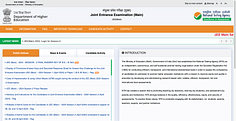Algorithms developed by IIT Mandi Researchers will provide predictions and analysis to more than one ongoing fluctuations and unpredictability of Summer Monsoon in the country.

Rainfall is a very crucial topic for Indians as the whole agriculture industry solely depends on that. Any unpredictable occurrences or fluctuations in the rain cycle becomes a big challenge for India. There was a strong need to examine and fix this. The researchers of IIT Mandi have come out with certain solutions for this.
Some changes in the periodicity of Indian Summer Monsoon Rainfall has been studied by them. The team of researchers included: Dr Sarita Azad, Assistant Professor, School of Basic Sciences, IIT Mandi. Accompanying her in this big project was her research scholars Mr Pravat Jena, Mr Sourabh Garg and Mr Nikhil Ragha of IIT Mandi. Their work is appreciated and published in a putative journal- American Geophysical Union (AGU), peer-review International journal Earth and Space Science.
Also Read:AIIMS Bibinagar (Telangana) Opens on 27th August
An algorithm has been created by the brainy minds to process 100 years of Indian rainfall data and as a part of the research; a lot of past data was also taken into consideration. The rainfall data of 1260 months (1901-2005) was used to analyse the Spatial distribution of triennial oscillations by the team. The power spectrum of the observed data was studied in order to find that 2.85-year periodicity was present at 95% confidence level. It was found out that Indian Summer Monsoon Rainfall has a periodicity of 2.85 years and during this time monsoon switches between strong and weak years. This period of 2.85 years is called Triennial Oscillation. This remained for over more than half of the 354 grids across India.
With the help of this algorithm, one too many things would be analysed like anticipating the information about global climate phenomena such as El Nino Southern Oscillation (ENSO) would become easier and less challenging. The main issue that needs to be studied/examined is the frequent switching that happens between strong and weak monsoon years.
Also Read: Time to Apply to SSC Selection Post 2019
With the algorithm, the decreasing intensity of rainfall in most parts of the country would be examined and that covers almost 41% of the area in the country. Coupled Model Intercomparison Project (CMIP), a collaborative framework based simulation has also been used, wherein data is projected into it and then used to find out the patterns of 2.85 year period oscillation. The finding states that there would be a weakening of this oscillation by the year 2100.
Indian summer monsoon totally depends upon temporal and spatial scales and the interactions between them. But even with complexities, monsoon rainfall has managed to show a well-defined pattern.
As per the findings, the researchers concluded that a Triennial Monsoon Cycle that is weak and not constant in periodicity will definitely continue to put a very critical impact on our Agriculture and Water Resource Management. The most affected parts of India will be the South-West Coastal Region, Northern Region and the Northeast-Central parts of India.


 Follow us
Follow us














